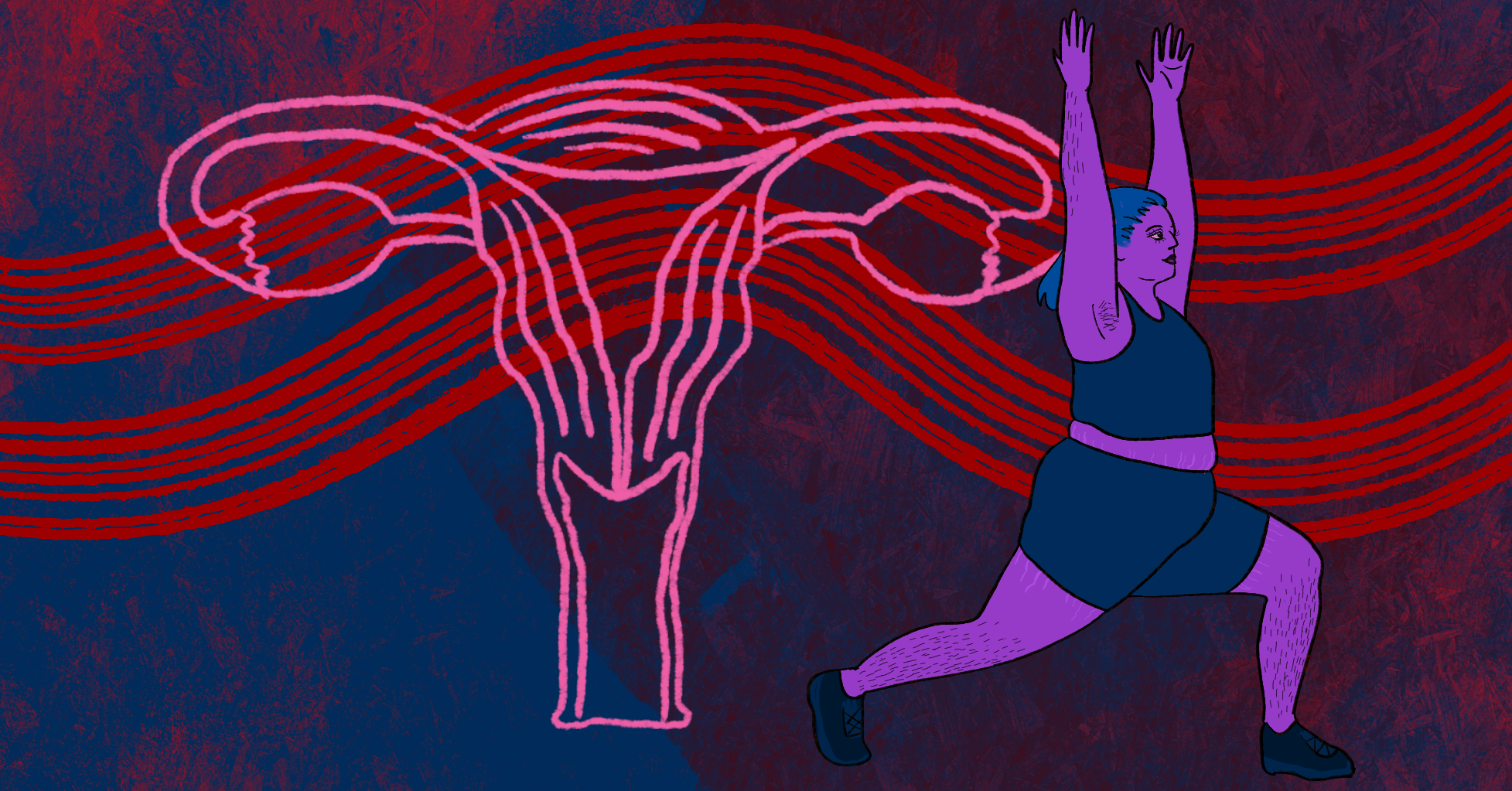Cycle syncing: the fitness training method behind UTSC SheMoves workshop
Third-year student-athlete Coralie Rimaud hosted “Exercising around your period” to help women structure their physical activity based on female-biology.
Coralie Rimaud hosted a workshop titled “Exercising around your period” on November 25, 2022, at the Toronto Pan Am Sports Centre as part of the U of T tri-campus SheMoves event, and reprised it on January 30, 2023.
Rimaud, an Environmental Studies major and tri-campus volleyball player at the University of Toronto Scarborough (UTSC), has long had a passion for health, sports, and nutrition, which motivates her to optimize her training through new ways, such as cycle syncing.
“This science was basically telling me that I could optimize my workouts around my menstrual cycle and achieve my fitness goals faster by working with and not against my body’s natural processes,” says Rimaud in an interview with The Medium.
Alisa Vitti, a holistic health practitioner, researched and introduced her proprietary Cycle Syncing Method framework in her 2014 book WomanCode. Vitti outlines that in addition to their circadian rhythm, which operates in humans on a 24-hour clock, females operate on a secondary infradian (longer) rhythm: the menstrual cycle.
A healthy menstrual cycle for a woman in her 20s can last anywhere between 24 and 38 days, and is marked by four distinct phases, each governed by fluctuations in hormone levels. The Cycle Syncing Method says that the impact of hormone fluctuations on the body should be considered in how we pursue our fitness goals, as they may influence changes in metabolism, immune system, stress response, and more.
The four phases of the menstrual cycle are: menstruation, the follicular phase, ovulation, and the luteal phase.
After the first phase of a three to seven day menstrual period, normally one out of many female egg cells (oocytes) will mature in an ovarian fluid-filled sac (follicle) for about 13 to 14 days of the follicular phase. During the follicular phase, rising levels of estrogen (female sex hormone) peak and trigger ovulation. In the third phase of the menstrual cycle, an ovary releases the matured egg (ovum) into the fallopian tube to then be fertilized by sperm before travelling towards the uterus.
After ovulation begins, the luteal phase wherein leftover follicles produce progesterone, a hormone that causes the lining of the uterus to thicken in preparation for a potential pregnancy. When a fertilized egg doesn’t implant in the uterus, progesterone levels drop, and the uterus lining begins to shed, initiating another cycle.
As appetite and cortisol levels lower during the follicular phase, Vitti claims you can increase your cardio levels during this time. During the luteal phase when our higher levels of sex hormones correlate with larger appetites and higher cortisol levels—which Vitti links to inflammation—we don’t have as much of a capacity for workouts with a large cardio component, and so exercises like yoga, Pilates, and strength training may be better options.
A few weeks after she learned about Vitti’s cycle syncing training method, Riamud says “[MoveU, a tri-campus fitness initiative at U of T], was thinking of having more educational events for students and I offered to host mine on ‘Exercising around your period.’” The main difficulty she found in organizing the workshop was the lack of empirical research on cycle syncing. “The sources I found were pretty vague, so I had to base my presentation on less reliable sources,” Rimaud admits.
Despite evidence that suggests hormone fluctuation affects appetite, mood, and more, there’s no research about the health or fitness impact of any program that attempts to sync exercise or nutrition plans with the menstrual cycle. Vitti claims that general fitness wisdom doesn’t give weight to hormone cycles because women haven’t historically been represented in medical research, and that women’s problems are often dismissed by doctors.
Rimaud, however, was pleased with the feedback she received after the workshops. “I always felt uncomfortable talking about my period,” she says, adding that in-group discussion made her realize her experience is a shared one. “I really felt empowered after the workshop to talk more openly about menstruation [and influence people to be healthier].”
The first step in cycle syncing is to track the phases of your period. Tracking tells you when you’ll get your period and if it’s irregular—occurring fewer than every 24 days or longer than every 38 days. An irregular period is something to discuss with your doctor for answers that might explain it’s cause.

